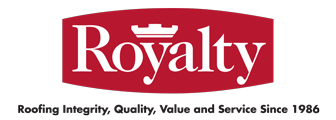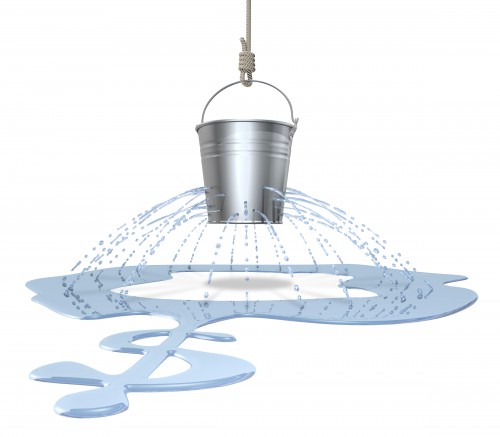What would you do if your commercial roof started leaking today? How would you protect your staff, supplies and machinery and prevent downtime from impacting your business? In a commercial facility, a single roof leak can have dramatic and immediate consequences, and if you don’t have a plan for what to do the moment the leak is spotted, the damage can run unchecked for hours before a repair team can get there.
What is a Roof Leak Action Plan?
It’s a list of things to do if you spot a leak in your commercial facility. It can help you respond swiftly if you spot a problem and give you clearly defined, easy to follow steps that will minimize the impact a leak can have on your facility and business. This simple checklist is made in advance and tailored to match your own unique needs.
If a leak occurs, you simply work the plan, without worry or taking the time to make decisions when you are faced with an immediate problem. Making this plan in advance is part of proper roof maintenance; for most facilities, the plan can be completed in a few hours, and then deployed as needed to minimize problems.
Recognize the Signs of a Commercial Roof Leak
You and your team should be able to recognize the signs of a leak. A puddle on the floor that just gets cleaned up won’t do you much good if it’s a symptom of you roof leaking. An employee who spots that puddle and knows to take action could save you thousands in damages and downtime. Spotting one or more of these issues should trigger the start of your leak action plan and a call to a commercial roof repair team:
– Puddles
– Dripping water (seen or heard)
– Wet, slick floors
– Stains on the ceiling or walls
– Musty or mildew smell
You’ve Found a Leak, Now What?
Outline the steps you want your team to take when a leak is spotted. Each facility is different, but the following should be considered and included:
- Notify management and roof repair professionals to ensure help is on the way.
- Put out hazard cones or signs and begin cleaning water from the floor to prevent accidents.
- Remove staff and guests from the area.
- Cover large or heavy items in the area with tarps, move smaller pieces out of the way.
- Use a bucket or trash cans to catch leaks.
- Check other areas for leaks. If you have spotted one, there may be more. Look in closets, unused rooms and other locations in addition to your main traffic and work zones.
- Make a list of damaged areas for your roofing team to review when they arrive so they can head immediately to the problem zone.
- Take photos of the damage and the leak in progress for insurance reasons and to document the issue.
- Talk with your roofing provider about your warranty and any coverage you have; work with them to determine next steps.
Creating a plan that has easy to follow, actionable steps and then keeping a copy of this list, along with needed items (buckets, tarps, etc.) in each section of your structure allows your team to spring into action immediately when a leak is found. It also eliminates guesswork and ensures you are notified immediately. A roof leak action plan takes only minutes to create but can save you days of downtime and hassle when you have an actual leak in progress. As always, our team is here for you if you have a problem. We’re just a phone call away.


